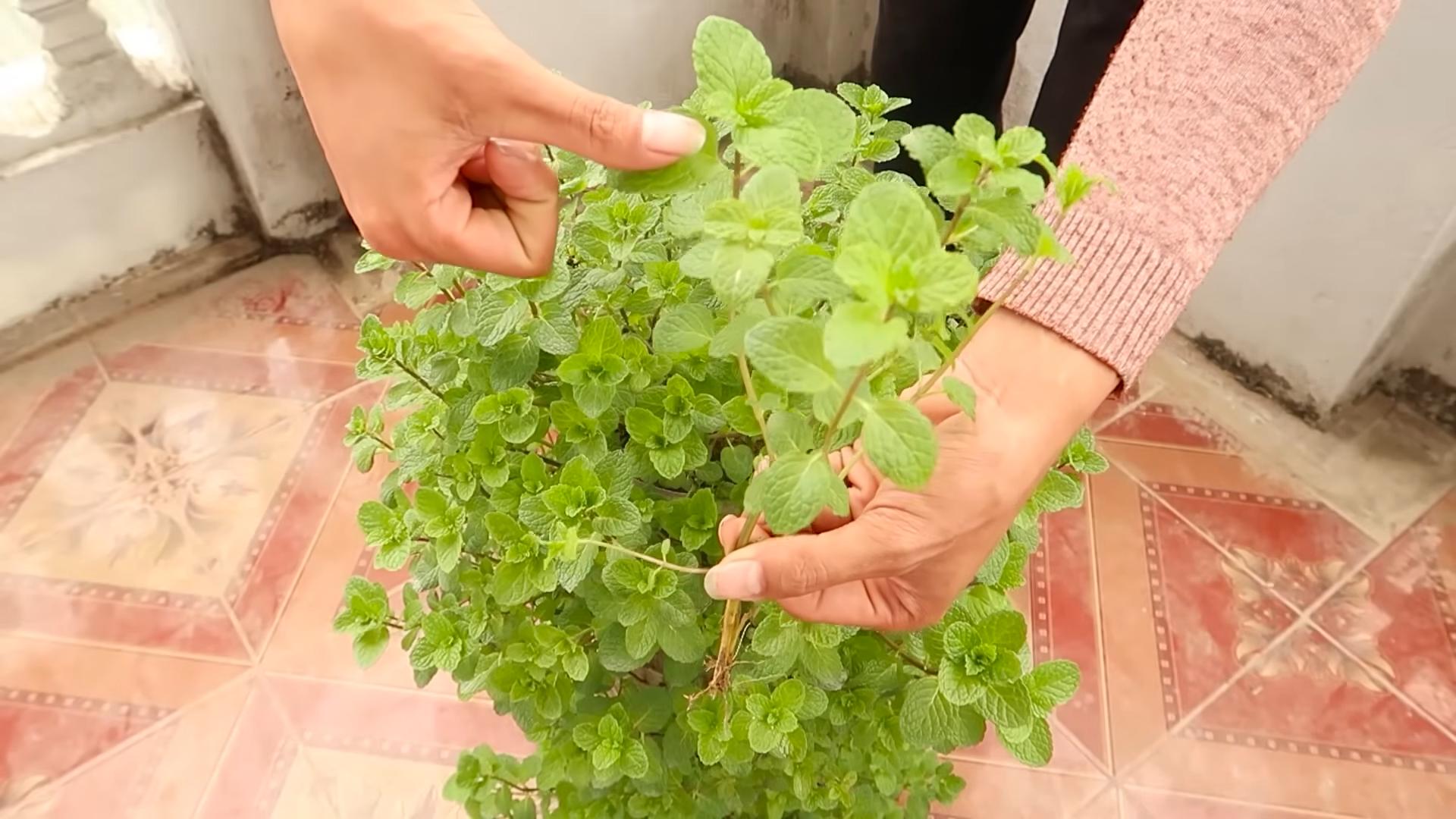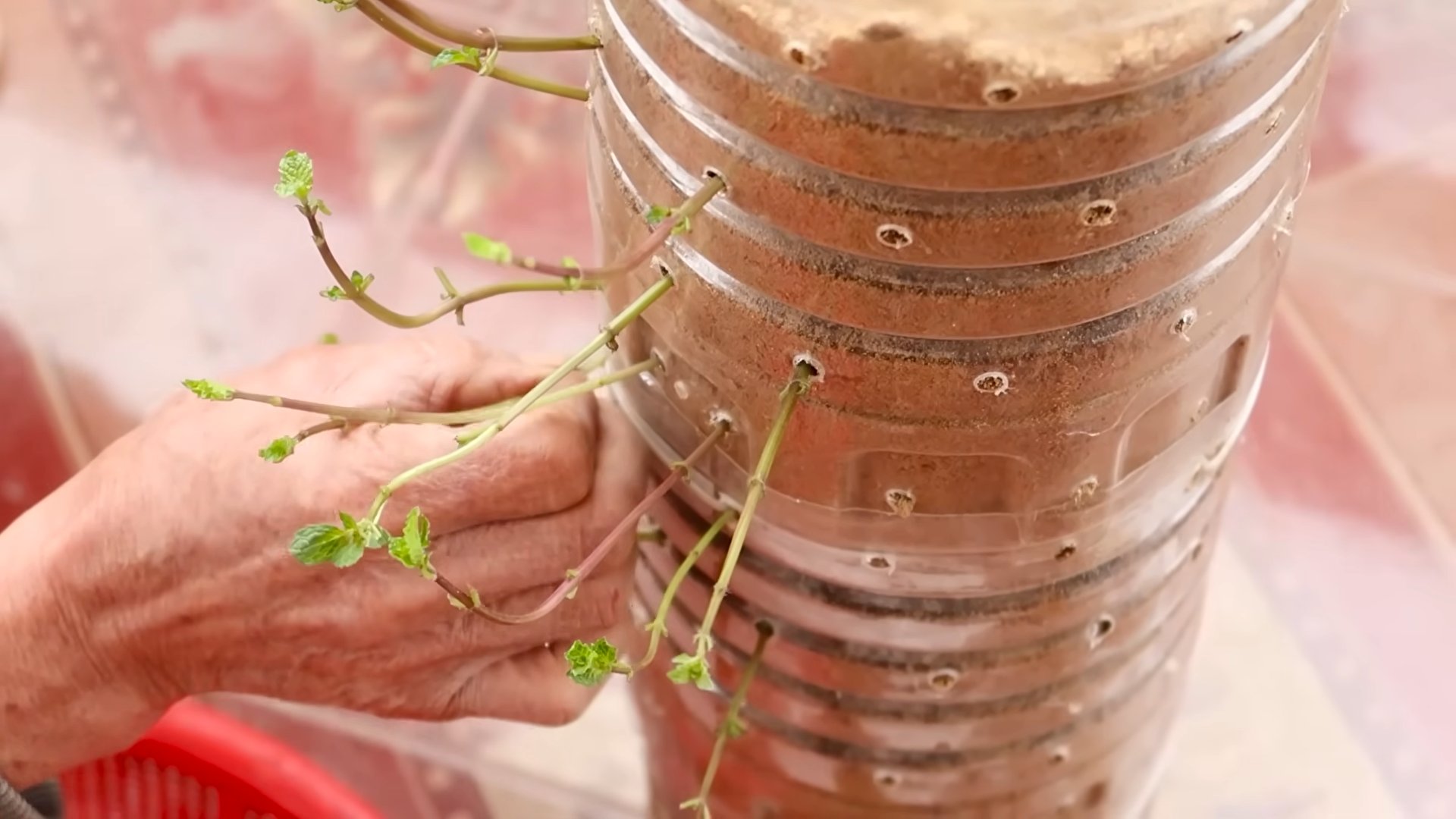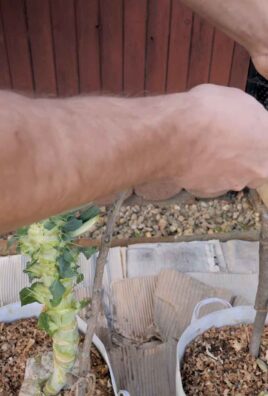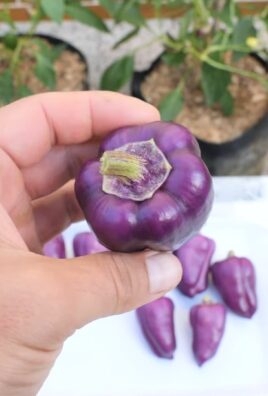Grow Oregano at Home with these simple, yet effective DIY tricks and hacks! Have you ever dreamt of snipping fresh, fragrant oregano straight from your garden to sprinkle over your homemade pizza or pasta? I know I have! For centuries, oregano has been more than just a culinary herb; it’s been a symbol of joy, health, and even protection in various cultures. From ancient Greece, where it was believed to ward off evil spirits, to traditional medicine practices where it was used for its antiseptic properties, oregano boasts a rich and fascinating history.
But let’s be honest, sometimes the idea of gardening feels overwhelming, right? That’s where these DIY tricks come in. Whether you have a sprawling backyard or just a sunny windowsill, I’m going to show you how easy it is to grow oregano at home. Imagine the satisfaction of knowing exactly where your herbs come from, free from pesticides and bursting with flavor. Plus, growing your own oregano is incredibly cost-effective compared to constantly buying it from the grocery store. So, ditch the dried stuff and let’s get our hands dirty! I’m excited to share these easy-to-follow tips that will have you harvesting your own oregano in no time.

Growing Oregano at Home: A DIY Guide for Flavorful Success
Hey there, fellow herb enthusiasts! I’m so excited to share my tried-and-true method for growing oregano right in your own home. Forget those sad, wilted bunches from the grocery store – fresh, fragrant oregano is just a few steps away, and trust me, it makes all the difference in your cooking. This guide will walk you through everything you need to know, from choosing the right variety to harvesting your bounty. Let’s get started!
Choosing Your Oregano Variety
Before we dive into the nitty-gritty, let’s talk oregano varieties. Did you know there’s more than one kind? Here’s a quick rundown to help you pick the perfect one for your needs:
* Greek Oregano (Origanum vulgare hirtum): This is the classic, pungent oregano you’re probably most familiar with. It has a strong, bold flavor that’s perfect for Mediterranean dishes, pizzas, and sauces. If you want that authentic oregano taste, this is your go-to.
* Italian Oregano (Origanum x majoricum): A bit milder and sweeter than Greek oregano, Italian oregano is a hybrid between oregano and sweet marjoram. It’s a great all-purpose oregano that works well in a variety of cuisines.
* Mexican Oregano (Lippia graveolens): Technically not a true oregano, Mexican oregano has a stronger, more citrusy flavor with hints of anise. It’s commonly used in Mexican and Southwestern cooking.
* Golden Oregano (Origanum vulgare ‘Aureum’): This variety is grown more for its ornamental value than its flavor, but it still has a mild oregano taste. Its bright golden leaves add a pop of color to your herb garden.
I personally love growing Greek oregano because of its intense flavor, but feel free to experiment and find your favorite!
Materials You’ll Need
Okay, now that you’ve chosen your oregano variety, let’s gather our supplies. Here’s what you’ll need:
* Oregano Seeds or a Starter Plant: You can start from seeds or buy a small oregano plant from a nursery. Starting from seeds takes a bit longer, but it’s more cost-effective.
* Potting Mix: Use a well-draining potting mix specifically formulated for herbs or vegetables. Avoid using garden soil, as it can be too heavy and compact.
* A Pot with Drainage Holes: Choose a pot that’s at least 6 inches in diameter to give your oregano plant room to grow. Make sure it has drainage holes to prevent waterlogging.
* A Sunny Location: Oregano needs at least 6-8 hours of sunlight per day to thrive. A south-facing windowsill or a sunny balcony is ideal.
* Watering Can or Spray Bottle: For watering your oregano plant.
* Optional: Grow Light: If you don’t have enough natural sunlight, you can supplement with a grow light.
* Optional: Fertilizer: A balanced liquid fertilizer can help boost growth, but it’s not essential.
Planting Your Oregano
Alright, let’s get our hands dirty! Here’s how to plant your oregano, whether you’re starting from seeds or a starter plant:
Starting from Seeds:
1. Prepare the Pot: Fill your pot with potting mix, leaving about an inch of space at the top. Gently pat down the soil.
2. Sow the Seeds: Sprinkle the oregano seeds evenly over the surface of the soil. They are tiny, so don’t overdo it.
3. Cover the Seeds: Lightly cover the seeds with a thin layer of potting mix.
4. Water Gently: Use a spray bottle to mist the soil gently. You don’t want to dislodge the seeds.
5. Create a Humid Environment: Cover the pot with plastic wrap or a plastic bag to create a humid environment. This will help the seeds germinate.
6. Place in a Sunny Location: Place the pot in a warm, sunny location.
7. Wait for Germination: Oregano seeds typically germinate in 7-14 days. Remove the plastic wrap once the seedlings emerge.
8. Thin the Seedlings: Once the seedlings are a few inches tall, thin them out so that they are spaced about 2-3 inches apart. This will give them room to grow.
Planting a Starter Plant:
1. Prepare the Pot: Fill your pot with potting mix, leaving about an inch of space at the top.
2. Remove the Plant from its Container: Gently squeeze the sides of the container to loosen the plant. Carefully remove the plant, being careful not to damage the roots.
3. Loosen the Roots: Gently loosen the roots of the plant with your fingers. This will encourage them to spread out and establish themselves in the new pot.
4. Plant the Oregano: Dig a hole in the center of the pot that’s large enough to accommodate the root ball. Place the plant in the hole and backfill with potting mix.
5. Water Thoroughly: Water the plant thoroughly until water drains out of the drainage holes.
Caring for Your Oregano Plant
Now that your oregano is planted, it’s time to give it the TLC it needs to thrive. Here’s what you need to know about caring for your oregano plant:
* Watering: Oregano prefers well-drained soil, so water it when the top inch of soil feels dry to the touch. Avoid overwatering, as this can lead to root rot.
* Sunlight: As I mentioned earlier, oregano needs at least 6-8 hours of sunlight per day. If you don’t have enough natural sunlight, supplement with a grow light.
* Fertilizing: You can fertilize your oregano plant every 2-3 weeks with a balanced liquid fertilizer. Follow the instructions on the fertilizer label. However, oregano doesn’t need a lot of fertilizer, so don’t overdo it.
* Pruning: Pruning your oregano plant regularly will encourage it to grow bushier and produce more leaves. Pinch off the tips of the stems to promote branching.
* Pest Control: Oregano is relatively pest-resistant, but it can sometimes be affected by aphids or spider mites. If you notice any pests, spray the plant with insecticidal soap.
* Overwintering: Oregano is a perennial herb, which means it can live for several years. However, it’s not very cold-hardy, so you’ll need to protect it from frost in the winter. If you live in a cold climate, you can bring your oregano plant indoors for the winter. Place it in a sunny location and water it sparingly.
Harvesting Your Oregano
The best part about growing your own oregano is, of course, harvesting it! Here’s how to harvest your oregano for the best flavor:
* When to Harvest: You can start harvesting oregano leaves once the plant is about 6-8 inches tall. The flavor is most intense just before the plant flowers.
* How to Harvest: Use scissors or pruning shears to cut off stems of oregano. Cut the stems back to just above a leaf node. This will encourage the plant to branch out and produce more leaves.
* Drying Oregano: If you want to dry your oregano for later use, tie the stems together and hang them upside down in a cool, dry place. Once the leaves are completely dry, crumble them and store them in an airtight container. You can also dry oregano in a dehydrator or oven.
* Using Fresh Oregano: Fresh oregano has a more delicate flavor than dried oregano. Add it to your dishes at the end of cooking to preserve its flavor.
Troubleshooting
Even with the best care, you might encounter a few problems along the way. Here are some common issues and how to fix them:
* Yellowing Leaves: This could be a sign of overwatering, underwatering, or nutrient deficiency. Check the soil moisture and adjust your watering accordingly. If the soil is dry, water the plant thoroughly. If the soil is soggy, allow it to dry out before watering again. You can also try fertilizing the plant with a balanced liquid fertilizer.
* Leggy Growth: This is usually caused by insufficient sunlight. Move your oregano plant to a sunnier location or supplement with a grow light.
* Pests: As mentioned earlier, oregano can sometimes be affected by aphids or spider mites. Spray the plant with insecticidal soap to get rid of them.
* Root Rot: This is caused by overwatering. Make sure your pot has drainage holes and avoid overwatering the plant. If you suspect root rot, repot the plant in fresh potting mix.
Enjoying Your Homegrown Oregano
Congratulations! You’ve successfully grown your own oregano at home. Now it’s

Conclusion
So, there you have it! Growing oregano at home is not just a fun project; it’s a gateway to fresher, more flavorful meals and a more sustainable lifestyle. Forget those wilted, overpriced sprigs from the grocery store. Imagine stepping out into your garden or onto your balcony and snipping off exactly the amount of vibrant, aromatic oregano you need, whenever you need it. The difference in taste is truly remarkable – a burst of peppery, slightly sweet flavor that elevates everything from pizza and pasta sauces to grilled meats and roasted vegetables.
This DIY trick is a must-try for several compelling reasons. First, it’s incredibly cost-effective. A single packet of oregano seeds or a small starter plant will yield a continuous supply of fresh herbs for months, even years, to come. Second, it’s surprisingly easy. Oregano is a resilient and adaptable plant, thriving even with minimal care. Whether you have a sprawling garden or a tiny apartment balcony, you can successfully grow oregano. Third, it’s incredibly rewarding. There’s a unique satisfaction in nurturing a plant from seed to harvest, knowing that you’re providing yourself with fresh, healthy ingredients.
But the benefits don’t stop there. Growing your own oregano allows you to control the growing environment, ensuring that your herbs are free from harmful pesticides and herbicides. You can also experiment with different varieties of oregano, each with its own unique flavor profile. Consider trying Greek oregano for its intense, classic flavor, or Mexican oregano for its citrusy notes. You can even explore ornamental varieties with variegated leaves for added visual appeal.
Beyond the culinary advantages, growing oregano at home also offers therapeutic benefits. The aroma of oregano is known to be calming and stress-reducing. Simply brushing against the leaves can release a fragrant oil that invigorates the senses. Plus, oregano is packed with antioxidants and other beneficial compounds, making it a healthy addition to your diet.
Don’t be afraid to get creative with your oregano cultivation. Try planting it in a decorative pot on your windowsill, or incorporating it into a vertical garden. You can even dry your own oregano leaves for long-term storage, preserving the flavor and aroma for use throughout the year. To dry oregano, simply hang bunches of stems upside down in a cool, dark, and well-ventilated place until the leaves are brittle. Then, crumble the dried leaves and store them in an airtight container.
We wholeheartedly encourage you to give this DIY trick a try. It’s a simple, affordable, and rewarding way to enhance your cooking, improve your well-being, and connect with nature. Once you experience the joy of harvesting your own fresh oregano, you’ll never go back to store-bought herbs again.
So, grab some seeds or a starter plant, find a sunny spot, and get ready to embark on your oregano-growing adventure. And most importantly, we want to hear about your experience! Share your tips, tricks, and photos with us in the comments below. Let’s build a community of oregano enthusiasts and inspire others to discover the joys of growing their own herbs. What are you waiting for? Start growing oregano at home today!
Frequently Asked Questions (FAQ)
What is the best time of year to plant oregano?
The best time to plant oregano depends on your climate. In warmer climates, you can plant oregano in the spring or fall. In colder climates, it’s best to start seeds indoors 6-8 weeks before the last expected frost and transplant them outdoors after the danger of frost has passed. This gives the seedlings a head start and allows them to establish themselves before the heat of summer. You can also purchase starter plants from a local nursery and transplant them directly into your garden or containers.
What kind of soil does oregano need?
Oregano thrives in well-draining soil with a pH between 6.0 and 8.0. It’s not particularly picky about soil fertility, and in fact, too much fertilizer can actually reduce the flavor intensity of the leaves. A good starting point is a basic potting mix amended with some compost or aged manure to improve drainage and provide essential nutrients. Avoid heavy clay soils, as they can become waterlogged and lead to root rot. If you have clay soil, amend it with plenty of organic matter, such as compost, peat moss, or shredded bark, to improve drainage.
How much sunlight does oregano need?
Oregano needs at least 6-8 hours of sunlight per day to thrive. Choose a location in your garden or on your balcony that receives plenty of direct sunlight. If you’re growing oregano indoors, place it near a sunny window, preferably a south-facing window. If you don’t have enough natural light, you can supplement with grow lights. Insufficient sunlight can result in leggy growth and reduced flavor.
How often should I water oregano?
Oregano is relatively drought-tolerant and doesn’t need frequent watering. Allow the soil to dry out slightly between waterings. Overwatering can lead to root rot, so it’s better to err on the side of dryness. When you do water, water deeply, soaking the entire root zone. Avoid getting the leaves wet, as this can promote fungal diseases. In hot, dry weather, you may need to water more frequently. Check the soil moisture regularly and adjust your watering schedule accordingly.
How do I harvest oregano?
You can start harvesting oregano leaves as soon as the plant is established, typically about 6-8 weeks after planting. The best time to harvest is in the morning, after the dew has dried but before the heat of the day. Use sharp scissors or pruning shears to snip off stems just above a leaf node. This will encourage the plant to branch out and produce more leaves. You can harvest up to one-third of the plant at a time without harming it. Regular harvesting will also help to keep the plant compact and prevent it from becoming leggy.
How do I dry oregano?
Drying oregano is a great way to preserve its flavor for long-term use. The easiest method is to hang bunches of stems upside down in a cool, dark, and well-ventilated place. Tie the stems together with twine and hang them from a hook or clothesline. Allow the oregano to dry for several weeks, or until the leaves are brittle. Once the leaves are dry, crumble them and store them in an airtight container in a cool, dark place. You can also dry oregano in a dehydrator or in a low oven (around 170°F) for a few hours.
Can I grow oregano in a container?
Yes, oregano grows very well in containers. Choose a pot that is at least 6 inches in diameter and has good drainage holes. Use a well-draining potting mix and place the container in a sunny location. Water regularly, allowing the soil to dry out slightly between waterings. Fertilize occasionally with a balanced fertilizer. Container-grown oregano may need to be repotted every year or two as it grows.
How do I propagate oregano?
Oregano can be easily propagated from seeds, cuttings, or division. To propagate from seeds, sow the seeds indoors 6-8 weeks before the last expected frost. To propagate from cuttings, take 4-6 inch cuttings from healthy stems in the spring or summer. Remove the lower leaves and dip the cut end in rooting hormone. Plant the cuttings in a well-draining potting mix and keep them moist until they root. To propagate by division, carefully dig up a mature oregano plant in the spring or fall and divide the root ball into several smaller sections. Replant the sections in separate locations.
Is oregano a perennial?
Yes, oregano is a perennial herb, meaning it will come back year after year. In colder climates, it may die back to the ground in the winter, but it will regrow in the spring. To protect oregano from frost damage, mulch around the base of the plant with straw or leaves in the fall. You can also grow oregano in a container and bring it indoors during the winter.
What are some common problems with growing oregano?
Some common problems with growing oregano include root rot, aphids, and spider mites. Root rot is caused by overwatering and can be prevented by ensuring that the soil is well-draining. Aphids and spider mites are common pests that can be controlled with insecticidal soap or neem oil. Regularly inspect your oregano plants for signs of pests or diseases and take action promptly to prevent them from spreading.




Leave a Comment